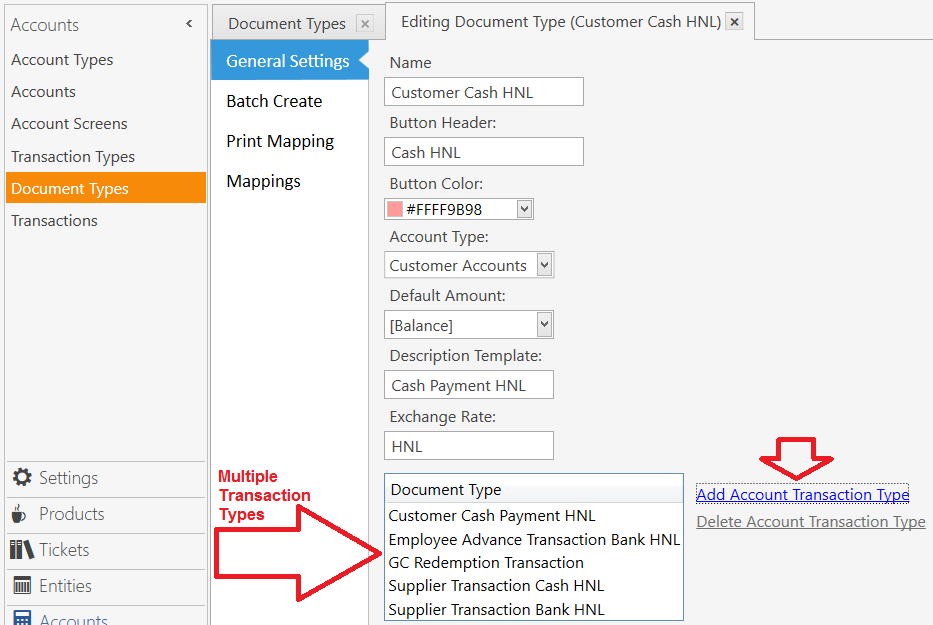Yes. One of the most effective methods to do so is to change the State for the Orders, then capture the Order State Updated event. For each Order whose State was updated, the Actions in the Rule will be performed. This is essentially how the VIP/HH Tutorial works when changing the Entity, and it is also how the Kitchen Display works to Print the Orders as Task Cards.
You can also use the Tag Order Action as Emre suggested, then capture the Order Tagged event. For each Order that was Tagged, the Actions in the Rule will be performed.
The key is that you capture the Event (Order State Updated or Order Tagged), and put your Actions in that Rule.
No, you cannot do what you show in your example. However, a Document Type can fire multiple Transaction Types. That is what the Selection box is for. In general, we only ever fire a single Tx Type, but you can fire as many as you want…
Obviously, the Tx Types should be related in some way, so the above example is ridiculous. That is, each of the Tx Types in the above example should pertain to a Customer Account (the setting for Account Type in the Doc Type), because it is the Account Id of the set Account Type (Customer Accounts) that will be used in the Transaction.
There is also the Batch Create configuration in a Document Type. It might help you as well. It might not. Unfortunately, I have no idea how it works or what it is for ;). @Jesse showed it’s use here:
